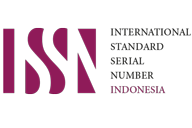Penerapan Metode Pembelajaran Kooperatif Tipe Group Investigation untuk Meningkatkan Hasil Belajar Peserta Didik
DOI:
https://doi.org/10.53863/kst.v6i02.1288Keywords:
Group Investigation, Learning Outcomes, Cooperative Learning MethodsAbstract
The ability to improve learning outcomes for students by going through the process to achieve satisfactory results can arouse students' enthusiasm and confidence in understanding the material to improve their learning outcomes. With the existence of new ways to improve student learning outcomes, one of which is using the Group Investigation type cooperative method, it can make students more enthusiastic, creative and there is social value, namely in this cooperative learning, students are also able to work together in small groups, there is positive dependence (mutual need), mutual assistance, and mutual motivation in order to achieve the desired goals and results. Researchers conducted this study to determine whether or not there was an increase in Group Investigation Type Cooperative Learning for Student Learning Outcomes. The data from this study were collected using a learning achievement test. While the analysis uses descriptive analysis. After all the data were analyzed, it was found that the increase in learning outcomes from the beginning reached 65.80 with a learning completeness of 53.27 in cycle I. The results of cycle II on average increased to
75.63 with a learning completeness of 73.61 and in cycle III increased again to 85.47 learning completeness 88.30 It turns out that the results in cycle III have exceeded the proposed criteria according to the research success indicators. This is evidenced from data collection about student learning outcomes included in the good category through 3 cycles. On the basis of the data obtained, the researcher concluded that the application of the Group Investigation Type Cooperative Method was able to improve student learning outcomes.
References
Anderson & faust (1982) Pendekatan Pembelajaran kooperatif.
Dewi, P.P. Y., Manuaba, I. S., & Suniasih, N.W. (2017). Pengaruh Model Pembelajaran Group Investigation Berbasis Proyek terhadap Hasil Belajar IPA Siswa Kelas IV. International Journal of Elementary Educaion, 1(4), 264.
Isjoni 2010. Pembelajaran Kooperatif Meningkatkan Kecerdasan Komunikasi Antar Peserta Didik. Yogyakarta: Pustaka Belajar.
Lestari, E., Cahyono, H., & Awaluddin, A. (2019). Penerapan Model Pembelajaran Group Investigation pada Materi Lingkaran untuk Meningkatkan Kemampuan Berpikir Kritis. Jurnal Math Educator Nusantara: Wahana Publikasi Karya Tulis Ilmiah di Bidang Pendidikan Matematika, 5(2). https://doi.org/10.29407/jmen.v5i2.12814.
Mafune, P. 2005. Teaching and Learning Models, A Reflection The Work of Bruce Joyce, Bev Showes (Online)
Ningsih, F. (2019). Pengaruh Model Pembelajaran Group Investigation terhadap Kemampuan Pemecahan Masalah Peserta didik Kelas VIII MTSN Kabupaten Kerinci. Jurnal Cendekia
Nurhadi, Dkk. 2003. Pembelajaran Kotekstual (Cooperative Learning di Ruang Kelas). Jakarta: Gramedia.
Pamawi, A. (2020) Penelitian Tindakan Kelas. Yogyakarta: CV. Budi Utama.
Supriyanto, I. (2020). Peningkatan Keterampilan Berpikir Kritis Melalui Model Pembelajaran Group Investigation Pada Siswa Sekolah Dasar.
Sutama, 2007. Model Pembelajaran Kooperatif Tipe Group Investigation untuk mengembangkan Kreativitas Mahasiswa, Hasil penelitian jurusan pendidikan Matematika FKIP Universitas Muhammadiyah Surakarta.
Syaodih. Erliany. 2007. Pengembangan Model Pembelajaran Kooperatif Untuk Meningkatkan Keterampilan Sosial. Educare. Vol. 5, No. 1.
Widiartini, P. D. O. (2019). Pengaruh Model Pembelajaran Group Investigation Berbasis Tri Hita Karana terhadap Kompetensi Pengetahuan IPA. Jurnal Ilmiah Sekolah Dasar.
Downloads
Published
How to Cite
Issue
Section
License
Copyright (c) 2024 ririn ririn, Rasyid Zuhdi

This work is licensed under a Creative Commons Attribution-ShareAlike 4.0 International License.
Authors retain copyright and grant the journal right of first publication with the work simultaneously licensed under a Creative Commons Attribution-ShareAlike 4.0 International License that allows others to share the work with an acknowledgment of the work’s authorship and initial publication in this journal

















